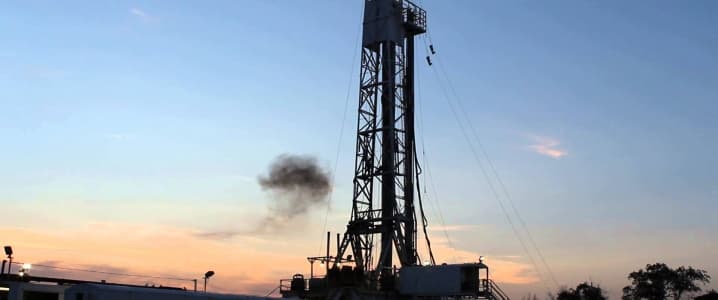Oil from the Bakken formation has been playing hard-to-get. According to data from the Energy information Administration (EIA), production from the North Dakota reserves peaked in December 2014, due to acutely stinted oil prices and the technical limits of existing extraction technologies. So, is the DAPL project even needed?
Even though the Dakota Access pipeline’s immediate utility may be constrained by these two factors, the long-term benefits of a line connecting the largest oilfield in the lower 48 states to refineries located in the rest of the country will ensure the speedy distribution of domestic energy resources as new technologies unlock previously unattainable reserves.
But the pipeline’s road to construction has been met with fierce opposition.
This week, numerous reports surfaced of police officers in Bismarck using tear gas and a water cannon on protestors who were opposing the Dakota Access pipeline (DAPL) in North Dakota’s freezing winter temperatures.
Environmentalists have stood alongside thousands of Native Americans fighting to protect drinking water resources for future generations. The latest word from CEO Kelcy Warren of Energy Transfer Partners – the company leading the construction of the $3.8 billion pipeline – tells the tale of an oil and gas industry emboldened by the election of Republican Donald Trump.
"There's not another way. We're building at that location," Warren – who donated $100,000 to Trump’s presidential campaign - said of the pipeline that will transport North Dakota’s shale oil to Illinois and the remainder of the country.
Reporting from The Wall Street Journal shows that Trump himself has between $500,000 to $1 million invested in ETP – another one of a long list of conflicts of interest for the future president as his business dealings clash with his new public responsibilities.
“I’m pretty confident that worst case, Jan. 20, we get our easement and proceed,” Warren told the WSJ last week.
On Inauguration Day, the DAPL and the Keystone XL pipeline will both gain the support of a White House that has publicly prioritized energy independence over climate change and environmental concerns.
Myron Ebell - the man in charge of the Environmental Protection Agency’s transition from President Barack Obama’s Clean Power Plan to Trump’s pro-clean coal and oil policies – sees the modern anti-climate change movement as “alarmist” and plans to scrap “unnecessary” Democratic regulations.
North Dakota’s Bakken formation has seen declining production in recent months due to low oil prices, which will likely continue to affect output for that region into the second quarter of 2017.
Even as market prices recover in the coming months—or year—technical challenges surrounding the extraction of oil from shale sands will limit production in the Bakken formation, lowering DAPL’s utility in the short and medium-term, according to Sandy Fielden, Morningstar’s Director of Oil and Products Research.
Fielden’s contention rests on the United States Geological Survey’s 3.65 billion barrel estimate for recoverable oil in the American side of the Bakken – a fraction of the 167 billion barrels that the North Dakota Geological Survey believes to be lying under the portion of the formation that lies within the state’s boundaries.
“Over time, getting a piece of infrastructure in the ground is going to be valuable. Period,” Brandon Blossman, an industry analyst with Houston-based Tudor, Pickering, Holt & Co., told FuelFix. “These are 50-year projects.” Related: Mexico To Reap $2.9 Billion In Profits From Oil Price Hedges In 2016
The light oil supplies in the Bakken as well as the Permian and Eagle Ford basins in Texas play a large role in lowering the United States’ reliance on unreliable foreign allies to fulfill energy needs.
Last year, the U.S. produced more light oil than at any point in the nation’s history – eliminating the need for further imports for that category of fuel.
As outlined by OilPrice.com’s Irina Slav less than a week ago, American refineries require a mixture of light and heavy crude to keep refineries profitable; they need to be operating at near 100 percent capacity. This logistical reality poses the greatest obstacle to U.S. energy independence in the short and medium-term, while the nation begins its long journey towards natural gas and renewable energies as a primary power source.
The economics of building a pipeline that will connect the Bakken to the remainder of the national energy infrastructure secures the progress the country has made in creating a self-sustaining energy environment. Even as the immediate profitability of the DAPL looks dubious, developing technologies will increase the line’s expected use.
By Zainab Calcuttawala for Oilprice.com
More Top Reads From Oilprice.com:
- Iraq Now Says It Will Join OPEC Output Cuts
- OPEC’s Matrix: If 1 Million Bpd Are Cut, Oil Will To Rally To $59
- Oil Prices Rise As EIA Report Adds To OPEC Optimism



















This article, and many others, give the impression that the U.S. is today oil independent. The article makes too much of light crude. Yes, we have a lot of light crude to export. but what about the heavy crude that we import, in part to provide suitable feed stock for the way our refineries are plumbed?
If we import about one-forth of our total crude as heavy crude, and export a small fraction of that amount as light crude, we are left still importing sizable net crude.
If crude prices stay close to where they have been over the last two years, how will the unconventional portion of the U.S. oil industry be profitable? Who, exactly, is going to pay to make our country in-fact oil independent?
In a twisted tale of oil mis-information and logic, are U.S. tax payers about to under-wright U.S. shale and deep-water petroleum production to make it look economically viable? Is that what Mr. Trump will preside over? "Energy independence," at any cost -- doesn't matter, as long as it looks like domestic crude?
Look for a subsidy near you.